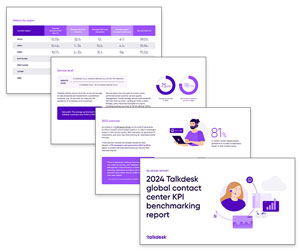Dave Salisbury looks at customer interactions and argues that we need to simplify our customer processes.
Fundamentals of Customer Interaction
Gitomer (1998) was very specific about why customer satisfaction is worthless and provided keen insights into how to build loyalty. While many businesses value and find the “voice of the customer” desirable to the organisation, the focus is on satisfying the customer and not interacting with the customer. Sinek (2009) adds the variable needed: why, as in why are businesses still trying to satisfy when loyalty is needed? Why are customers still being taken advantage of when logic claims the long-term relationship is more critical than short-term gains, thus making the need for loyalty that much more valuable in dollars to the business. Why serve the customer when the customer needs more than simple “service”?
Customer service is simply geared to expeditiously interacting with the customer in a mass environment. A recent call to a cell phone provider remains an excellent illustration of mass service hysteria. During this call, a simple question was asked, why is my statement so high? The representative placed the caller on hold four separate times, never answered the customer’s question, and because the customer changed their plan, the call was considered a success. The customer then went online, spent an additional hour in Instant Message (IM) with a second customer service rep, and finally was given less of an answer before quitting in exasperation. Foolishly, the call centre sends an automatic survey to the customer asking for his or her opinion. The customer is going to express his or her dissatisfaction in the “customer satisfaction survey. Why was it sent? Why place the financial future of a low-paid customer service rep in jeopardy simply because the customer remains upset and the managers deem that information valuable?
The customer call centre remains the epitome of the carrot and stick approach to customers, with the customer and the frontline customer-facing representatives squeezed into numbered boxes, small cubicles, and an individuality-draining environment, making the customer and the customer representative soulless zombies held captive in an endless cycle of frustration. Offer a carrot to a customer to go away, threaten the customer representative with a stick if they do not fit squarely into the business environment and achieve all the key-performance indicators (KPIs) demanded by the business, although the KPI is in direct opposition to serving the customer. The above incident is a perfect example of KPIs being anti-customer. The representative needs to make a quota for call plan changes and sales, the customer needs serviced, but to actually answer the question means that the time the representative spent on the phone would have surpassed a KPI. The carrot and stick approach is to offer the customer bill credits to go away quickly so the representative can move onto the next call, a KPI mindset that is causing frustration for the representative and the customer.
Let’s use one more recent example as a comparison. The Department of Veterans’ Affairs has been in the news a great deal recently. Veterans remain the forced customer trapped in an endless cycle of bureaucratic red tape. The result is that veterans are now being called for a customer service survey to determine how they feel they were served. Why would this information be valuable with all the customer hostility in the veteran population? Why waste taxpayer dollars to obtain veteran “customer” insight when the bureaucracy has not changed, the red tape remains stifling, and the officers enforcing the bureaucracy continue to harm veterans as the captive customer?
Veterans are reporting that after every interaction with the various VA bureaucrats, a customer satisfaction survey is thrust upon them and sold to them as an improvement tool. Doubt remains as to the value to the veteran, and to the VA as a whole, and provides more KPIs harming the customer, eliminating service to the customer, and destroying any hope of correcting the actual problems; but the VA is gathering a ton of additional information for office clerks to sort through and make reports upon.
With these thoughts in mind, what do we do and where do we go from here? Better yet, why are these the preferred actions when logic relates there is a better path forward? Finally, since KPIs are needed, how should they be adjusted to provide more actionable data personalised to the individual employee while remaining valuable to the entire business?
On the subject of KPIs, when was the last time that each KPI was evaluated and the questions “why” and “what” were asked to justify that specific item on a list of measurable actions in a KPI process review? If the answer is “I don’t know” or longer than 18 months, there is a significant problem with the KPIs reporting obsolete data and doing more harm than good. As a consultant in a call centre, I walked item-by-item through the KPI matrix my first day on the job and successfully concluded a project shortly thereafter by simply moving the KPI matrix back into providing actionable and non-obsolete data. If each piece of data cannot be explained and justified by the newest member on the floor receiving scores on performance, the KPI matrix is obsolete, confusing, and ineffective in driving actions that actually benefit the employee and those the employee contacts. Ask the managers to define what the KPIs are, what is being measured, and detail specific actions an employee should be coached in to improve a specific indicator. If the answers are not clear and easy to understand, the KPI is ineffective and doing more harm than good.
Juran’s rule that the KPI is expected to form a pathway to progression as a business process remains powerful. When problems arise in KPI data and employee adherence, 90% of the time the problem is not the employee but the KPI in question. Is Juran’s rule being applied consistently, effectively, and powerfully to drive understanding and communication in the organisation or is the answer to “blame the employee”? Dandira (2009) remains powerfully applied here: ineffective KPIs can be, and many times are, a dynamic source of organisational cancer because of employee confusion about what to do to improve, resulting in employee morale problems.
Five points to consider moving forward
1. Never allow a business process or procedure to be more than 12 months old without a full and comprehensive review justifying that process and every step in that process
I was called in to discuss a customer-influencing process. The process had more than 30 steps involved and 12 separate employees to accomplish the task. The process could not be described in 30 minutes, and customers were upset from experiencing this process, adding to the already upset nature of the involved customers and the frustration in the front-line employees assisting them. Technology improved this process by a third, but the company could not determine how to improve the process. I asked why on each step and employee involved. Four hours of discussion resulted in cutting 8 of the involved employees from the process. Asking “what” resulted in further steps cut in the process. At the conclusion of the contract, the complicated process was described in a single elevator ride, which simplified the results for the customer and set the business on the road to continuous improvement of business processes.
So, pick a process, look at the age, and ask in an elevator ride for the process to be described. Keep riding the elevator until the entire process from beginning to end is detailed. How many elevator trips were needed? Never create a process or a measurement that cannot be explained in a single elevator ride.
2. Who is catching the blame on recorded calls: technology, the customer, or the customer service rep?
The problem is not with any of these parties, and properly naming the problem remains the first step in solving the problem.
For example, on a contract for a manufacturing company, a problem existed that could not be explained, causing issues in quality control and proper billing to customers. The problem observed was not the problem; the process and actionable data capture were the problems. Until the company could properly identify and act on the real problem, they continued to blame the employee and burned through several highly talented employees in the process.
The action taken began with identification of the real problem and the underlying processes. Then, we began working out the actual solution. The first and second actions projected and beta-tested were abject failures. Once the full measure of the problem was identified in a series of continuous events, the third proposed solution worked. Not great, but it worked. The fourth and fifth solutions worked better. Finally, the sixth review fixed the problem.
So, identify the problem, and then make the resolution an intuitive process of learning and developing. Failure is okay, provided the current failure is moving the problem forward towards solutions and new thinking.
3. Who is the customer?
Are we wasting time on separating internal and external customers when that time would be better spent treating them both equally? Rarely should the internal customer be treated better than an external customer, but many times resources are limited and external customers must come first. Do internal customers know why this decision is being made and when the experience is projected to end?
During a merger, I was contracted as a W-2 employee on start of contract. At the conclusion of the merger, employees were told external customer resources were being moved back to support internal customers, and benefits and resources would flow back to the employees. Upon the successful completion of the merger, this policy was not honoured, and the mass of employees leaving the company was monumental, as employees felt betrayed.
Knowing the “why” and the “what” behind organisational decisions by all customers is important. If this company had been more forthcoming about the “why” and the “what”, the loss of employees would not have been so great. More to the point, the loss of employees created post-merger problems resulting in “right-sizing efforts”, “down-sizing”, and finally “post-merger consolidation of facilities”, all of which are euphemisms hiding the real problem, failure to treat all customers with respect and valuing the customers.
4. The “Why” and the “What”
While the “why” is critical, both remain powerful, and communicating these simply, effectively, and persuasively remains the role of leadership. Ask yourself, can employees define “what” we do? Can employees define “why” we do the things we do? Do employees know “why” we compete in our marketplace the way we do? What are the answers and why are the answers coming in with the trends? Can you answer this, and what is the action to move forward?
I had the pleasure of working as a W-2 employee for a company that did this right. On the first day of training, the employee learned the “why” and the “what”. Then, every day the employee learned how each process, procedure, and daily task fed into the “what” and the “why”. This promoted the employee to understanding and becoming an agent for action in the business. This pattern is replicable, but employees must know the “why” and the “what” and business leaders must know the “why” and the “what” and disclose this information to the full organisation.
5. Stop only “serving” the customer
“Serving” the customer is useless, wasteful, and ruins the power of customer interactions, reducing these opportunities to filling needs not building relationships. If your customer-facing employees are only providing “service”, the business has settled for failure and has become a self-fulfilling prophecy.
This is not a subject of semantics, word plasticity, and mind games. This is a fundamental mindset of the power possessed by loyal customers acting as marketing tools to drive profitability. If the customer only receives “service”, the customer is not satisfied, the customer-facing employee is not satisfied, and precious resources are wasted on fruitless gimmicks and useless action. Worse, the ROI is zero at best, but usually negative. If internal and external customers are simply treated as customers, how can a business leader expect to build customer and employee loyalty or experience bottom-line growth?
Make time to build customer-reaffirming experiences and the bottom-line will grow. Stop serving the customers, stop blaming the employees, stop looking for solutions in technology without knowing the business and identifying the problems. If not, Dandira’s (2012) counsel will be the reward, organisational cancer, and organisational death.
References
Dandira, M. (2012). Dysfunctional leadership: Organizational cancer. Business Strategy Series, 13(4), 187-192. doi: http://dx.doi.org/10.1108/17515631211246267
Gitomer, J. (1998). Customer satisfaction is worthless – Customer loyalty is priceless. Atlanta, GA: Bard Press.
Sinek, S. (2009). Start with why: How great leaders inspire everyone to take action. New York, NY: Penguin Group.
Author: Dave Salisbury
Reviewed by: Jonty Pearce
Published On: 15th Feb 2017 - Last modified: 16th May 2024
Read more about - Customer Service Strategy, Customer Loyalty, Customer Service, Dave Salisbury, Key Performance Indicators (KPIs)








































